Year 9 Lines and Angles Worksheets
Algebraic Angles in Parallel Lines
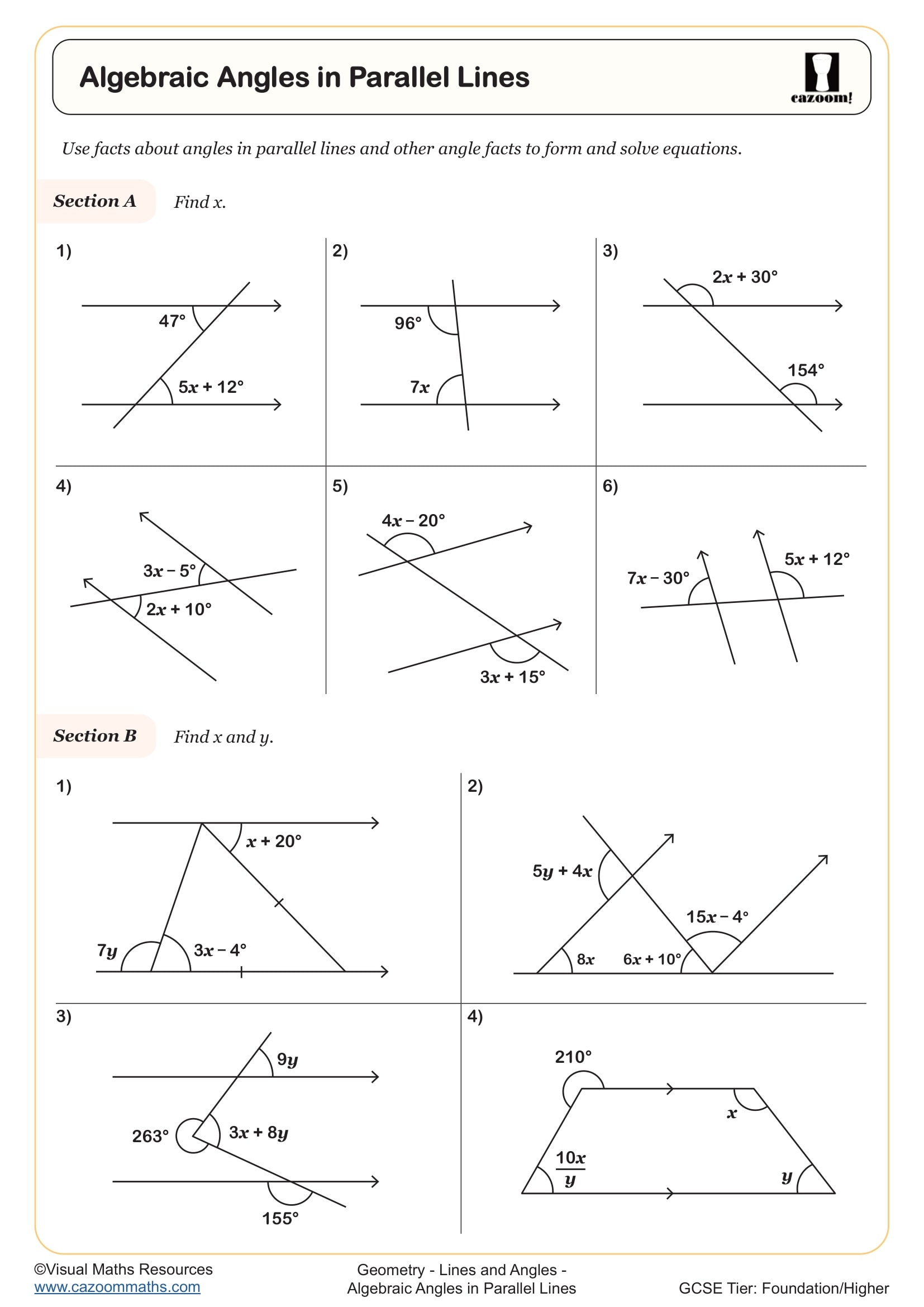
Alternate and Corresponding Angles (A)
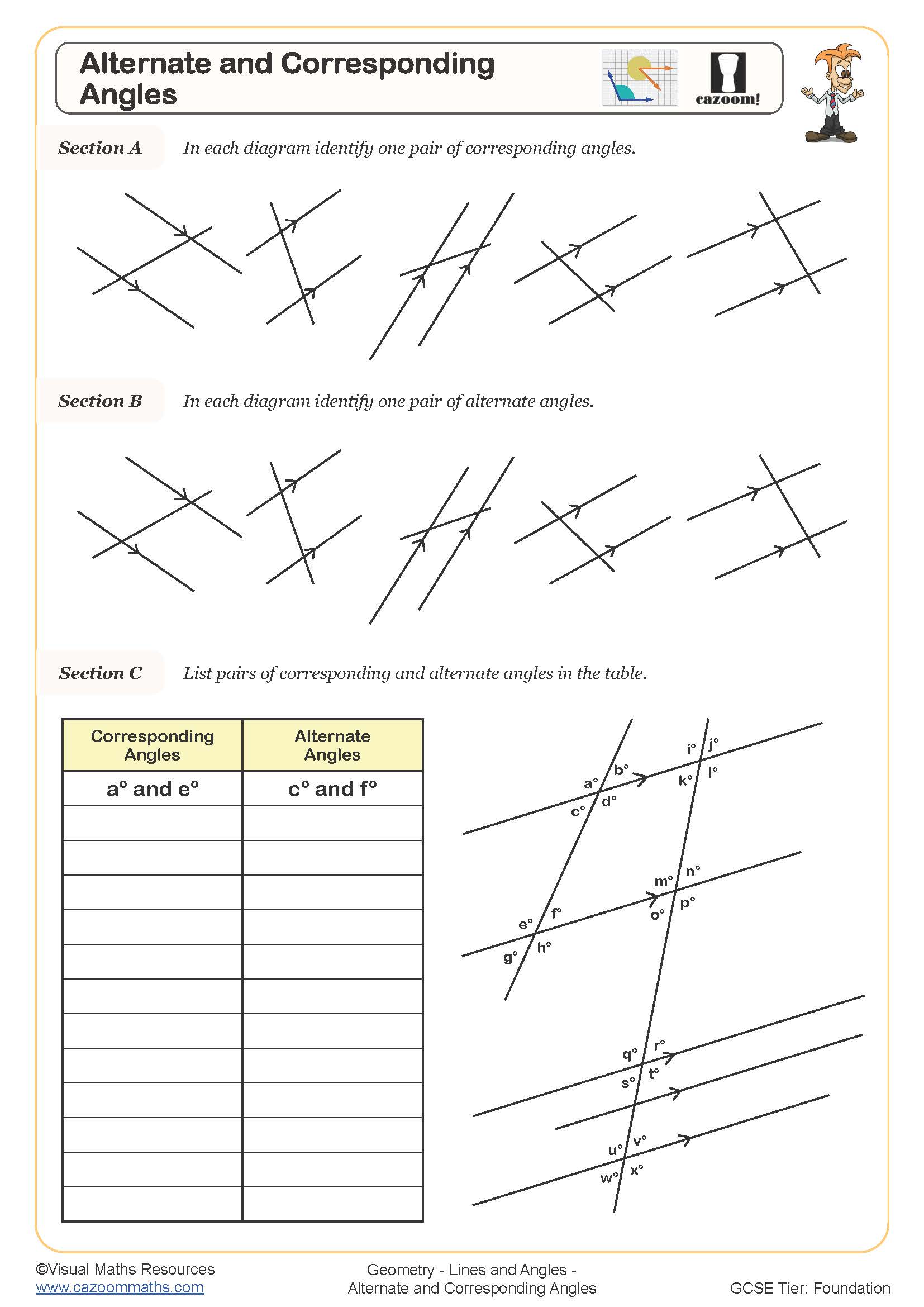
Alternate Angles
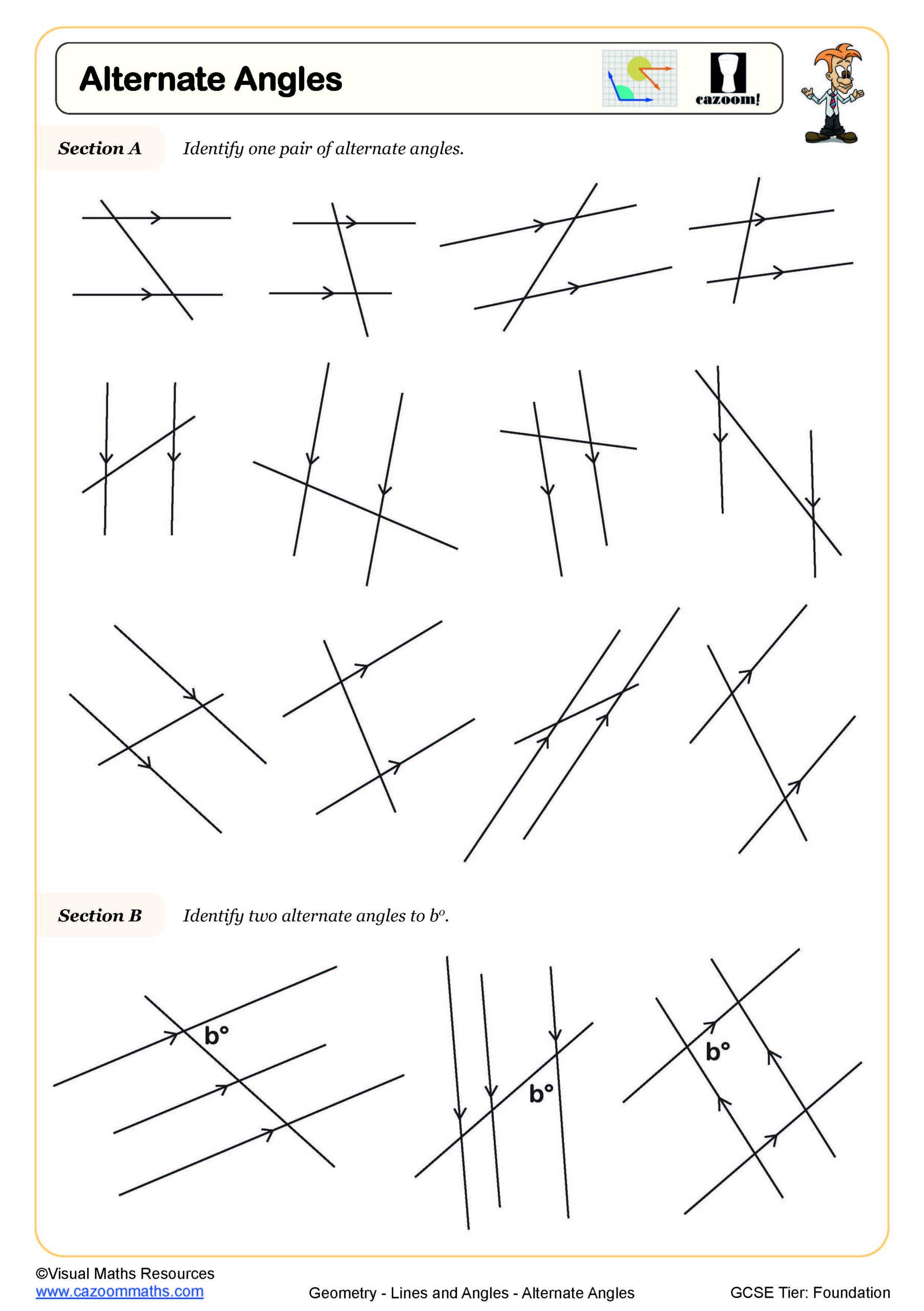
Angles in Parallel Lines - Choosing the Correct Rule
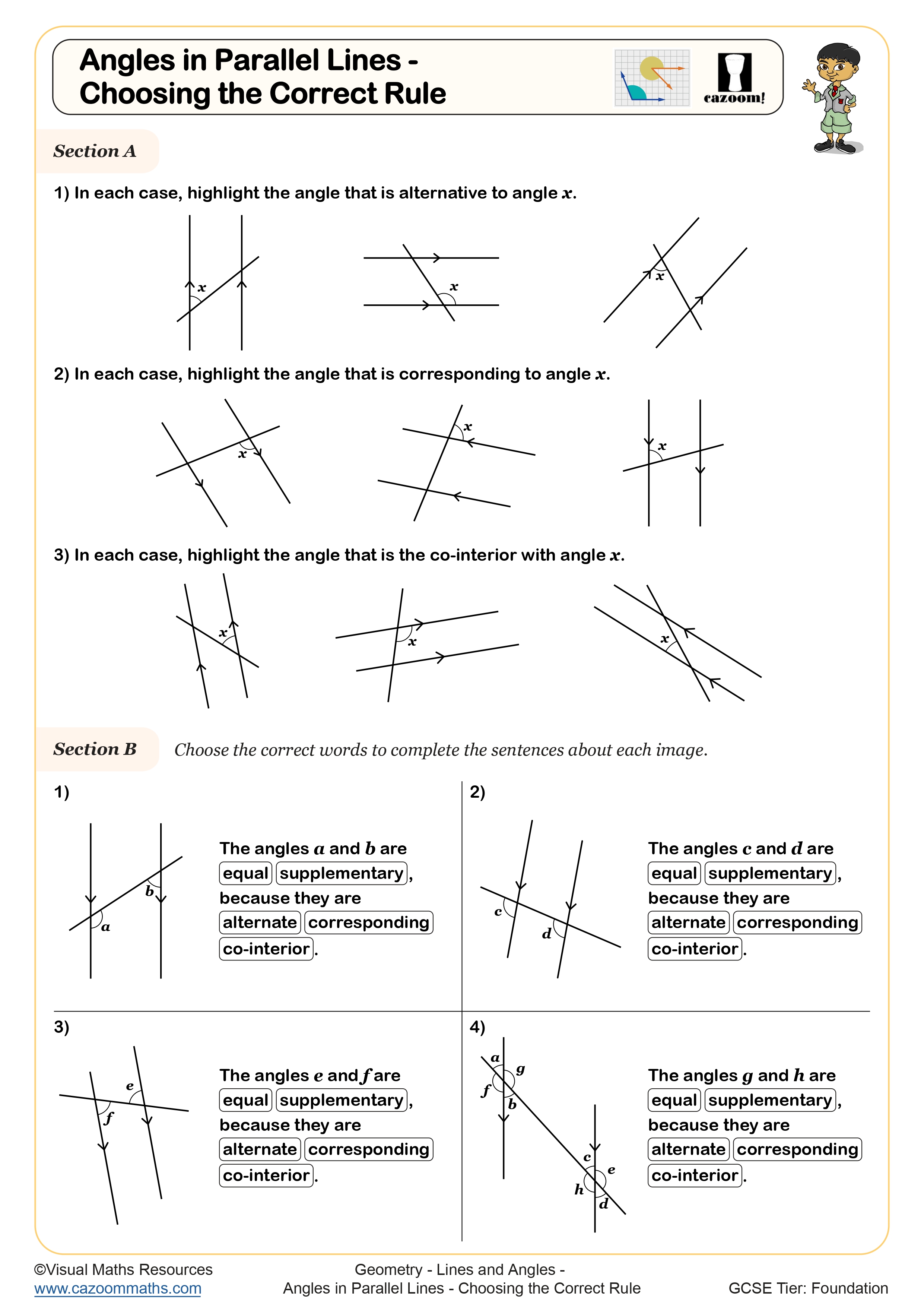
Angles in Triangles (B)
/Cazoom-Maths-Lines-and-Angles-Angles-in-Triangles-(B-Worksheet.jpg)
Angles on Parallel Lines (A)
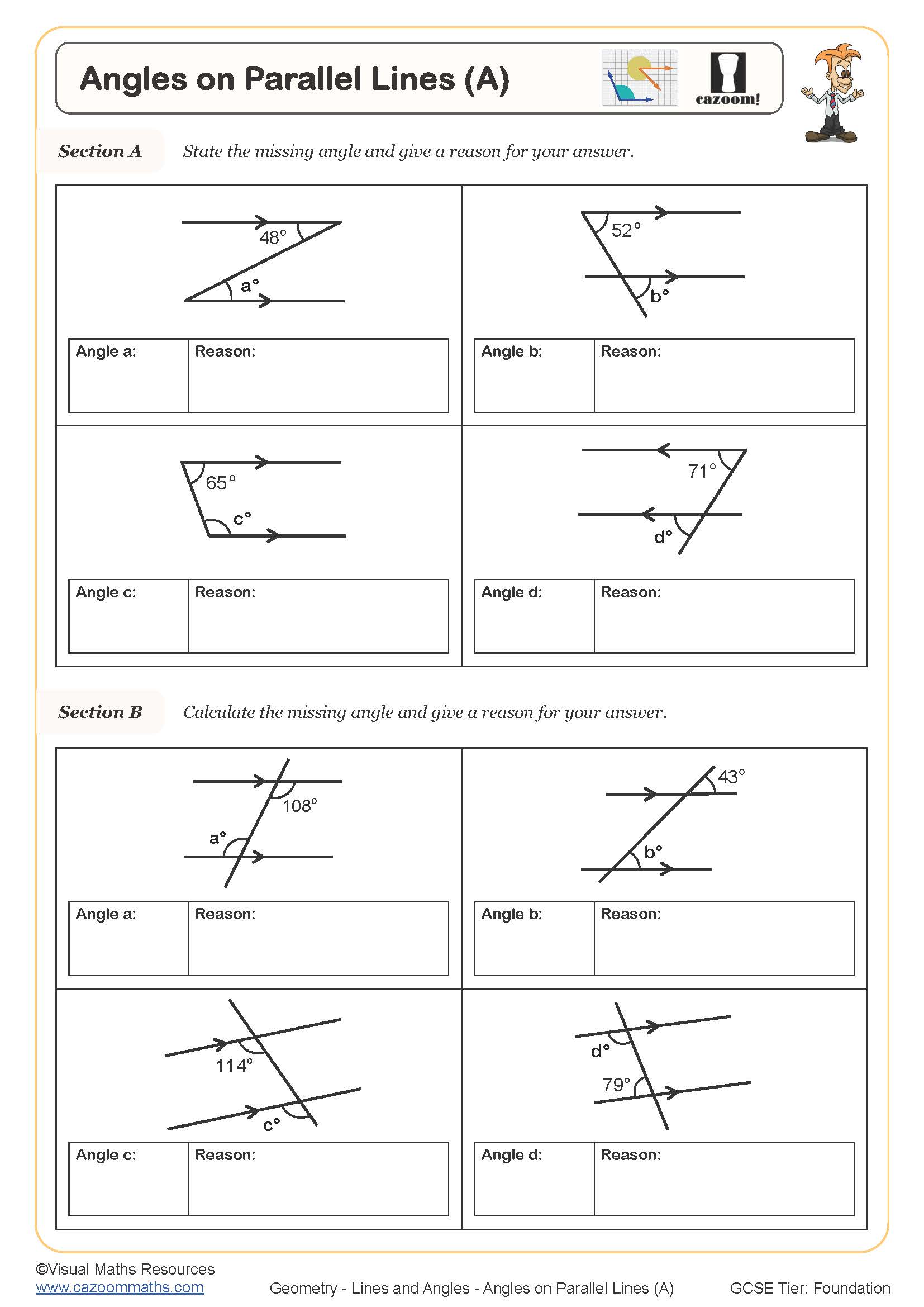
Angles on Parallel Lines (A) (With Clues)
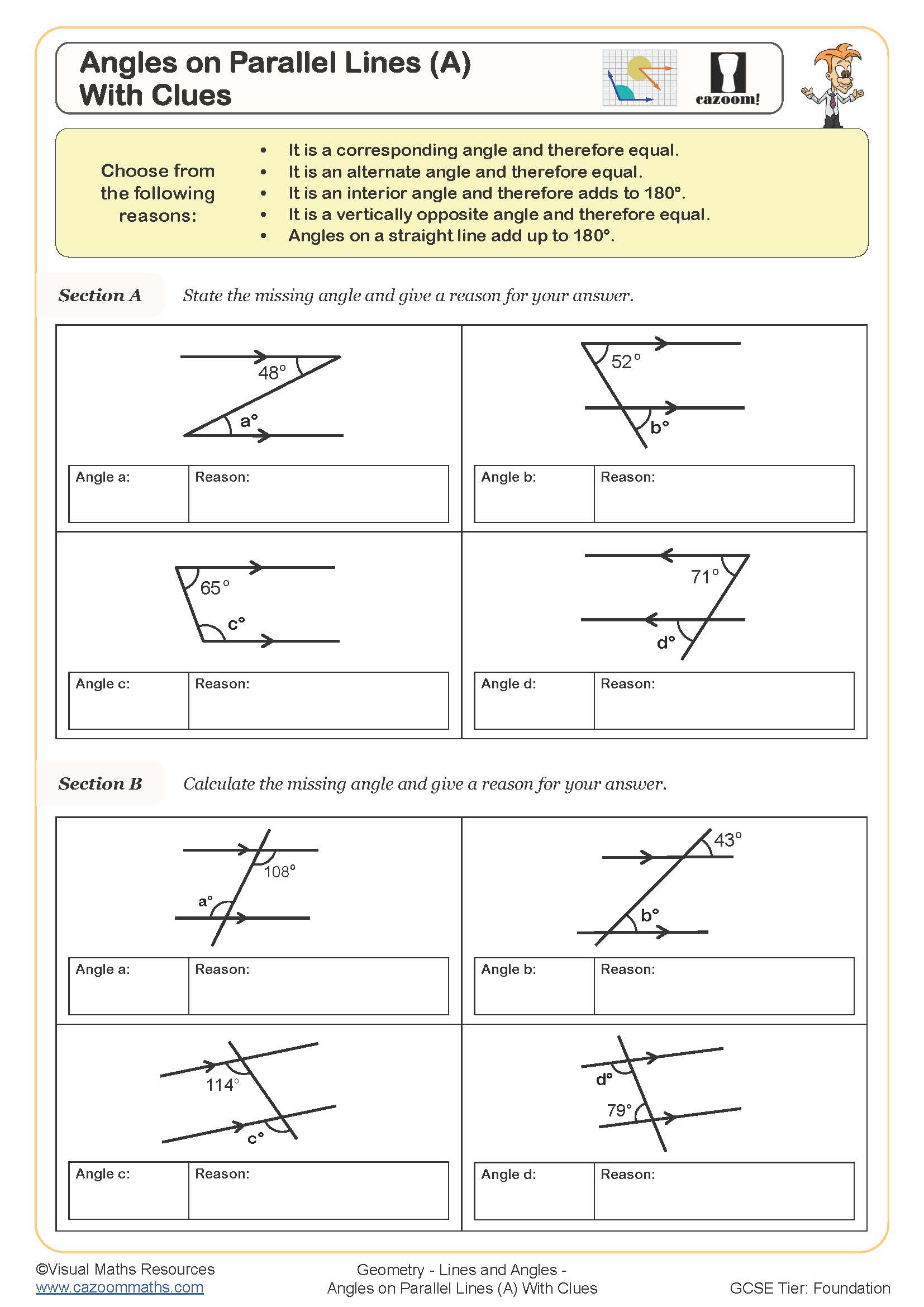
Angles on Parallel Lines (B)
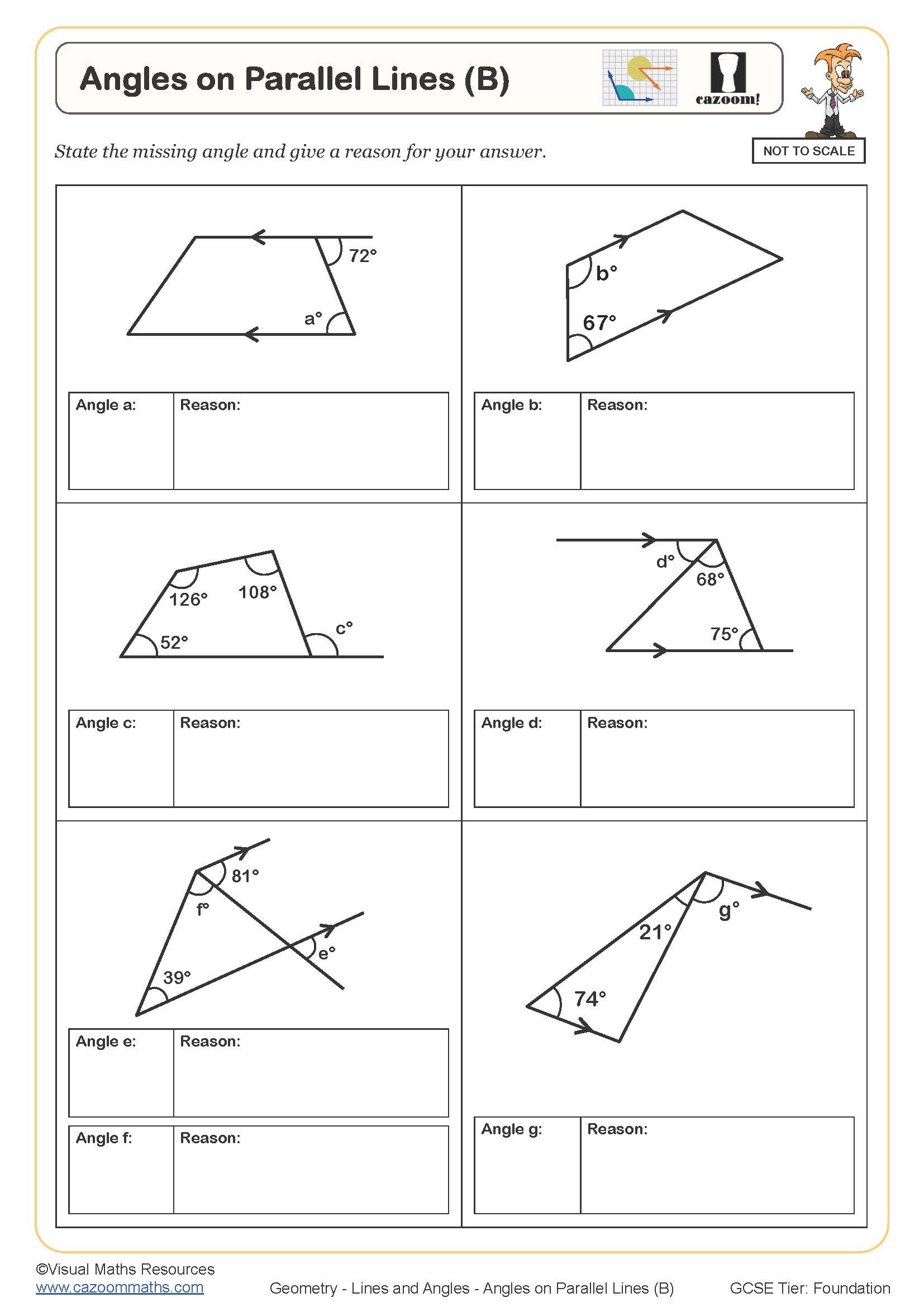
Angles on Parallel Lines (B) (With Clues)
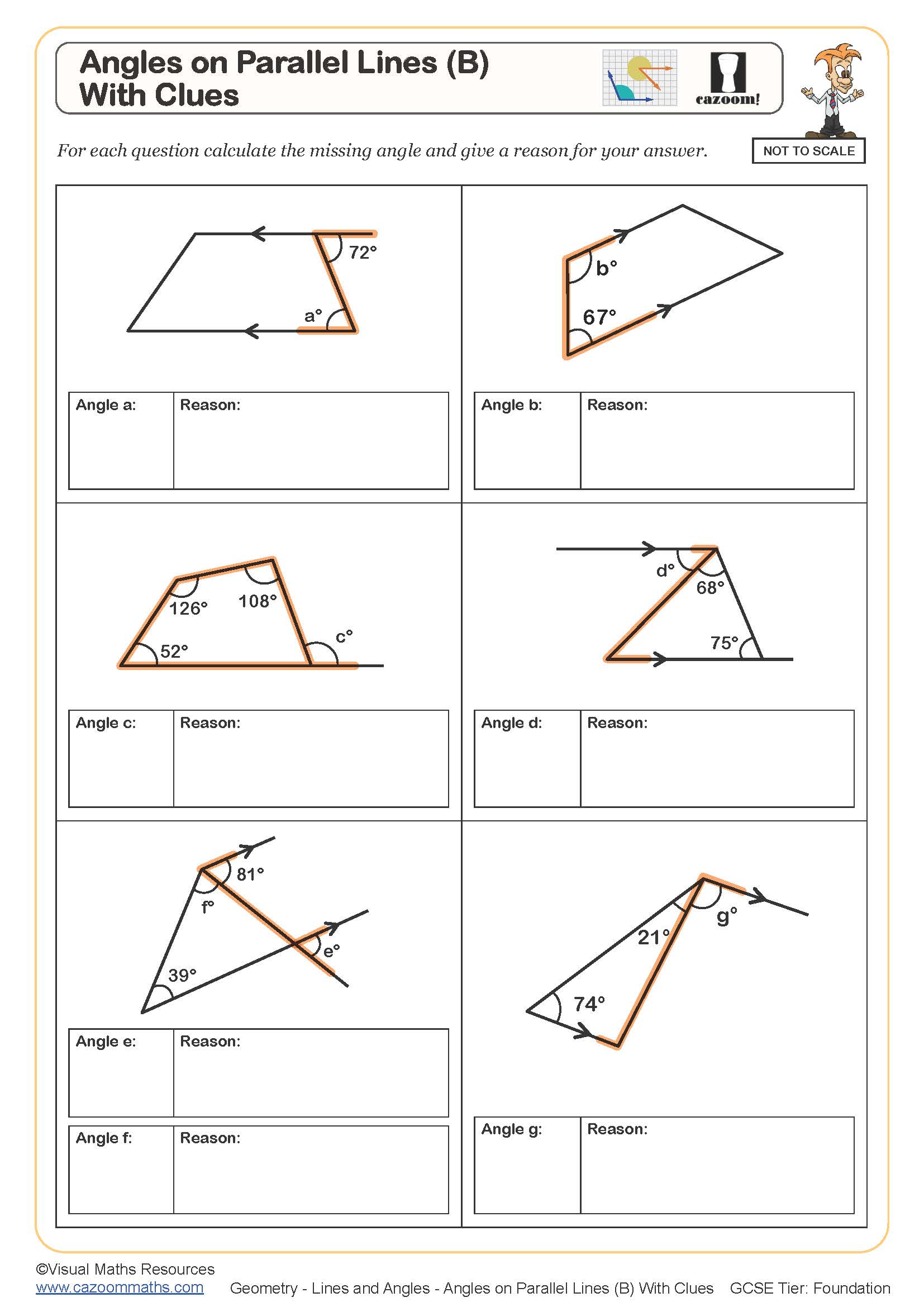
Angles on Parallel Lines (C)
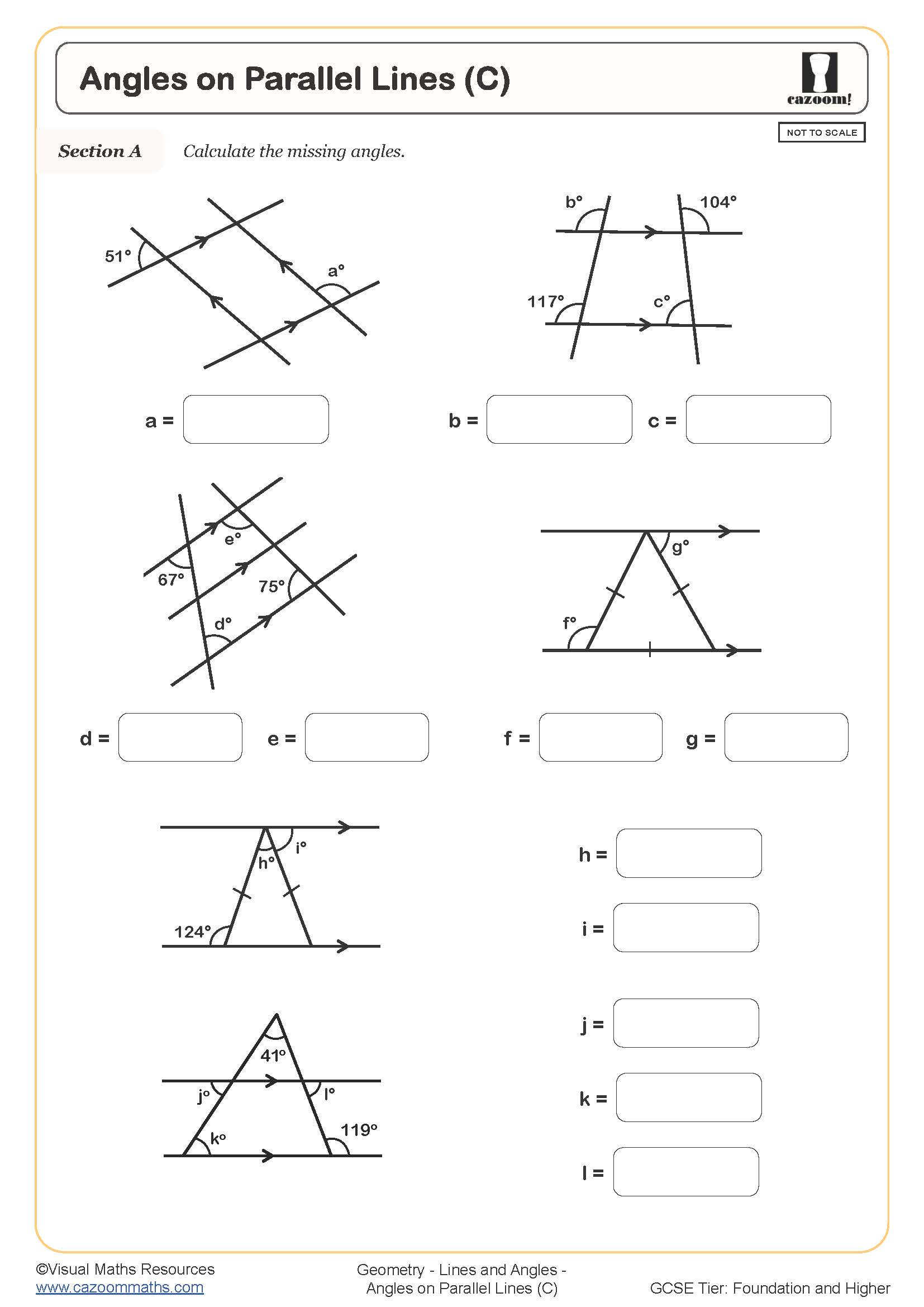
Angles on Parallel Lines (C) (With Clues)
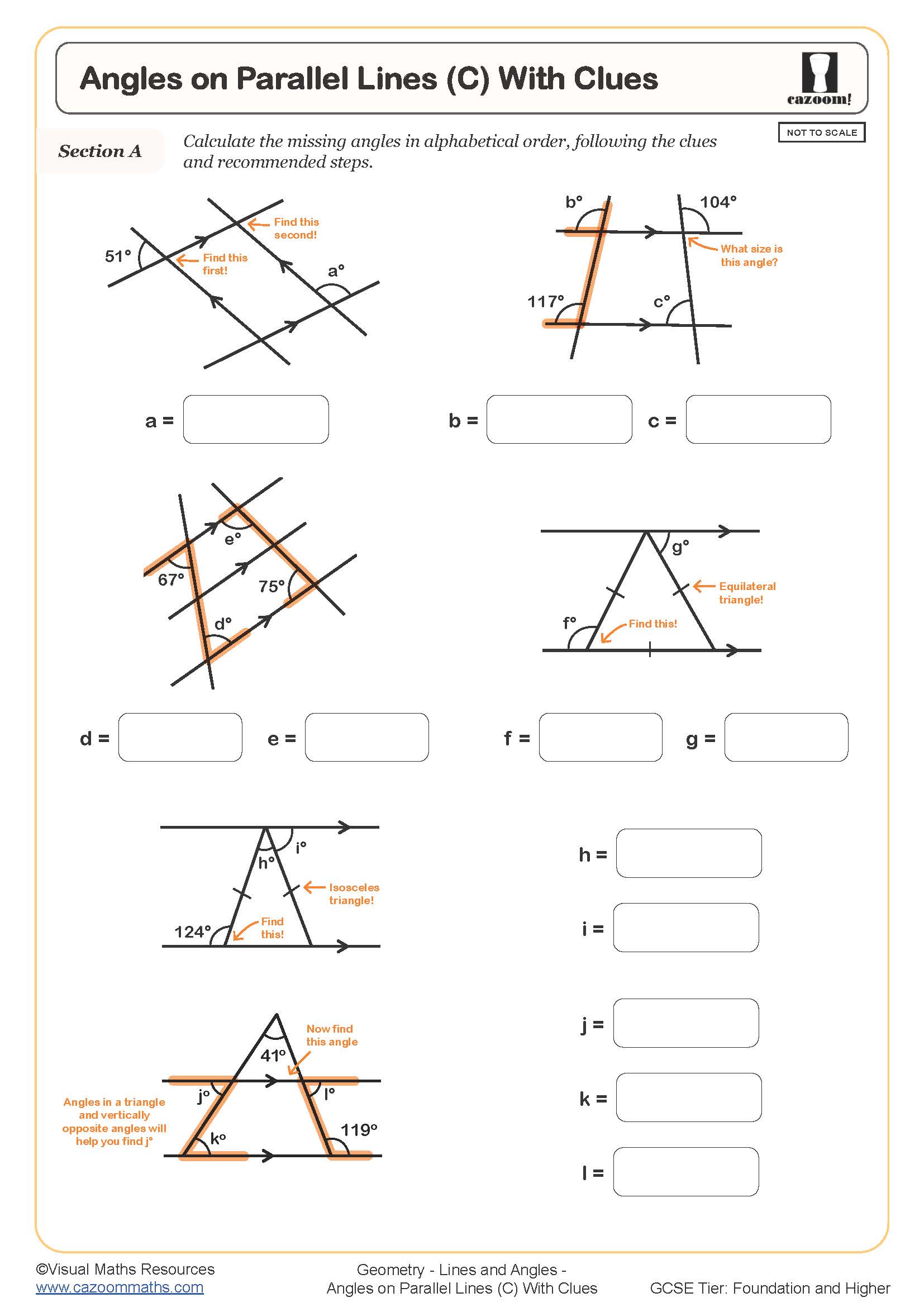
Calculating Angles (A)
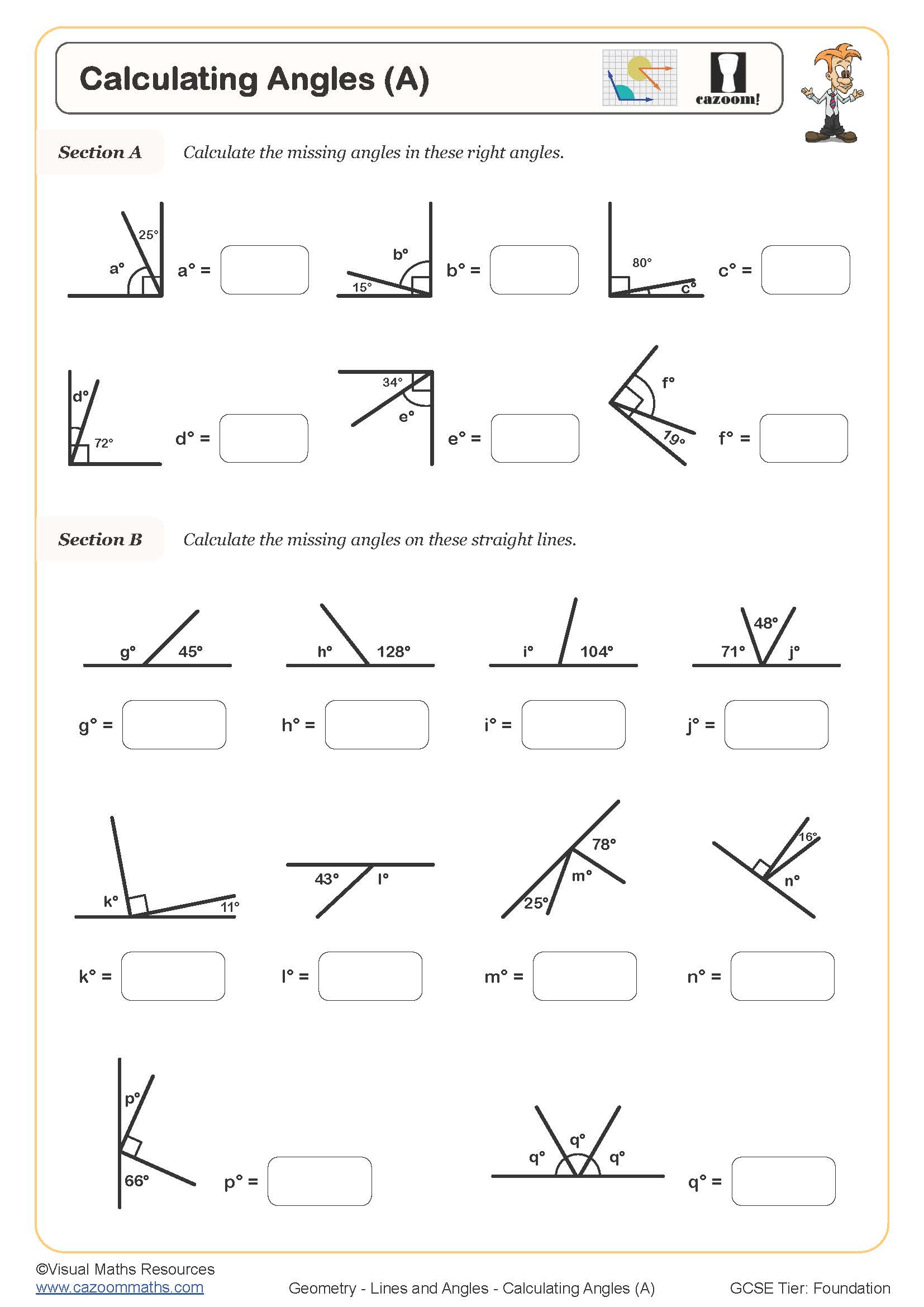
Calculating Angles (B)
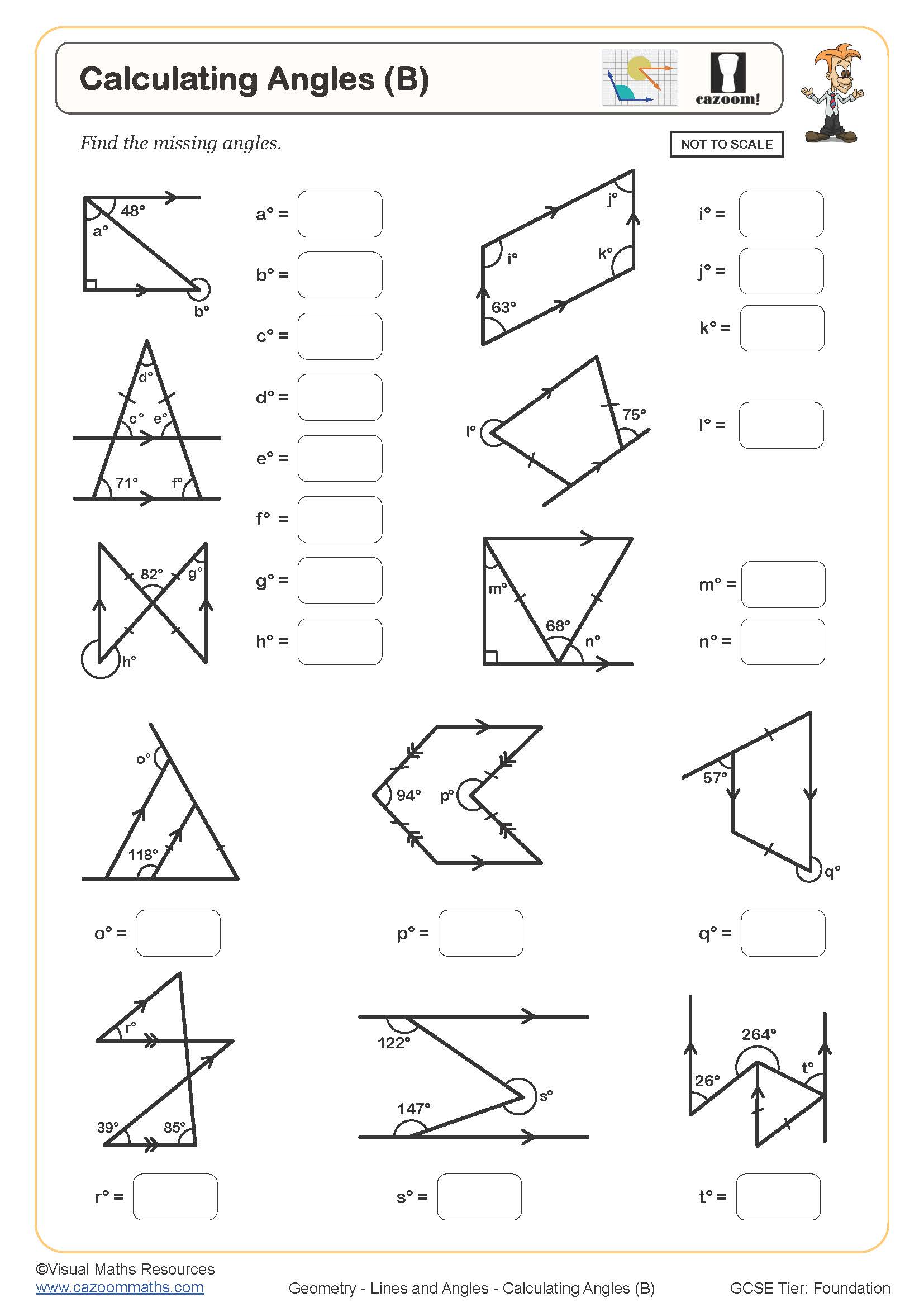
Calculating Angles (B) (With Clues)
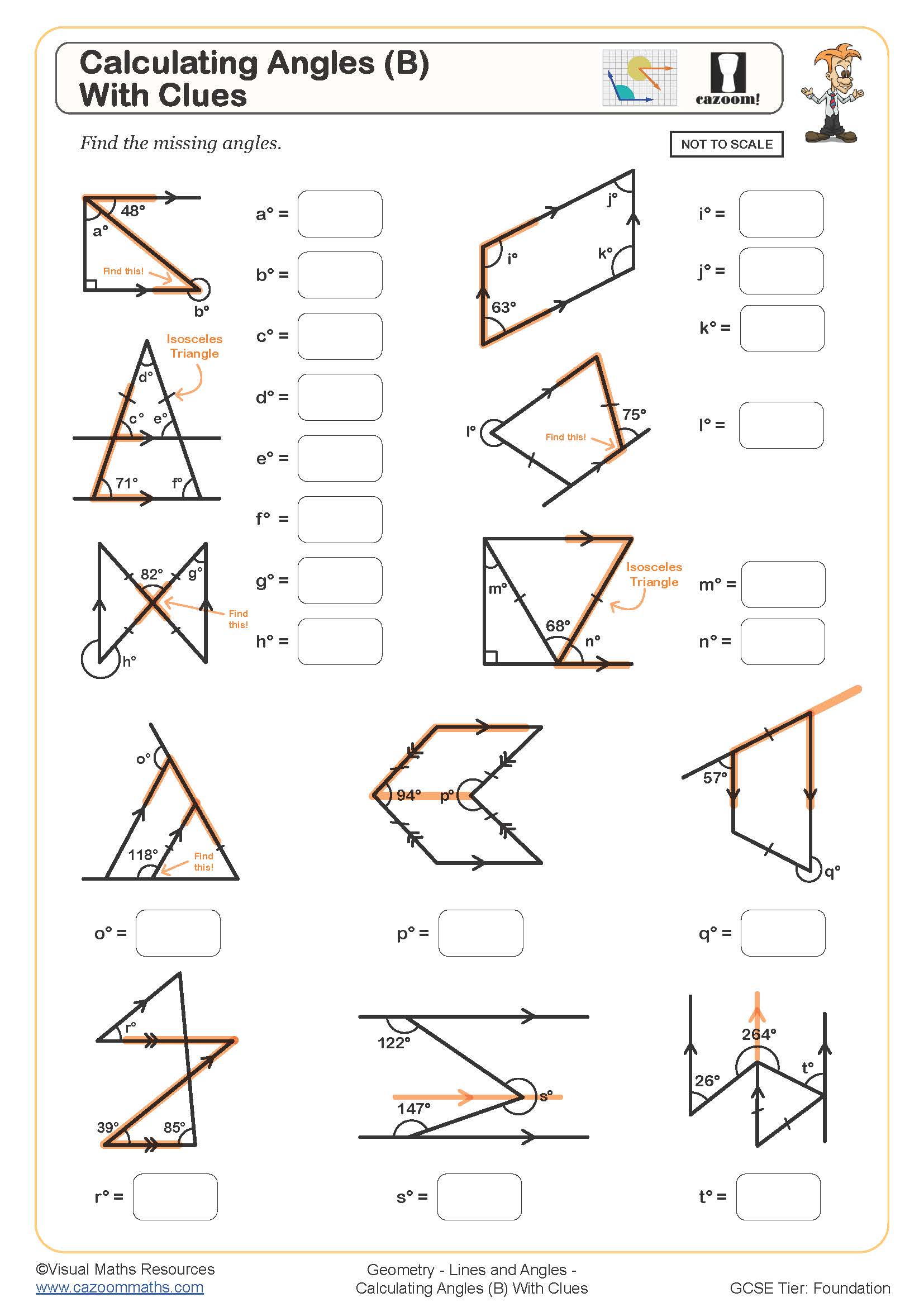
Co-interior Angles
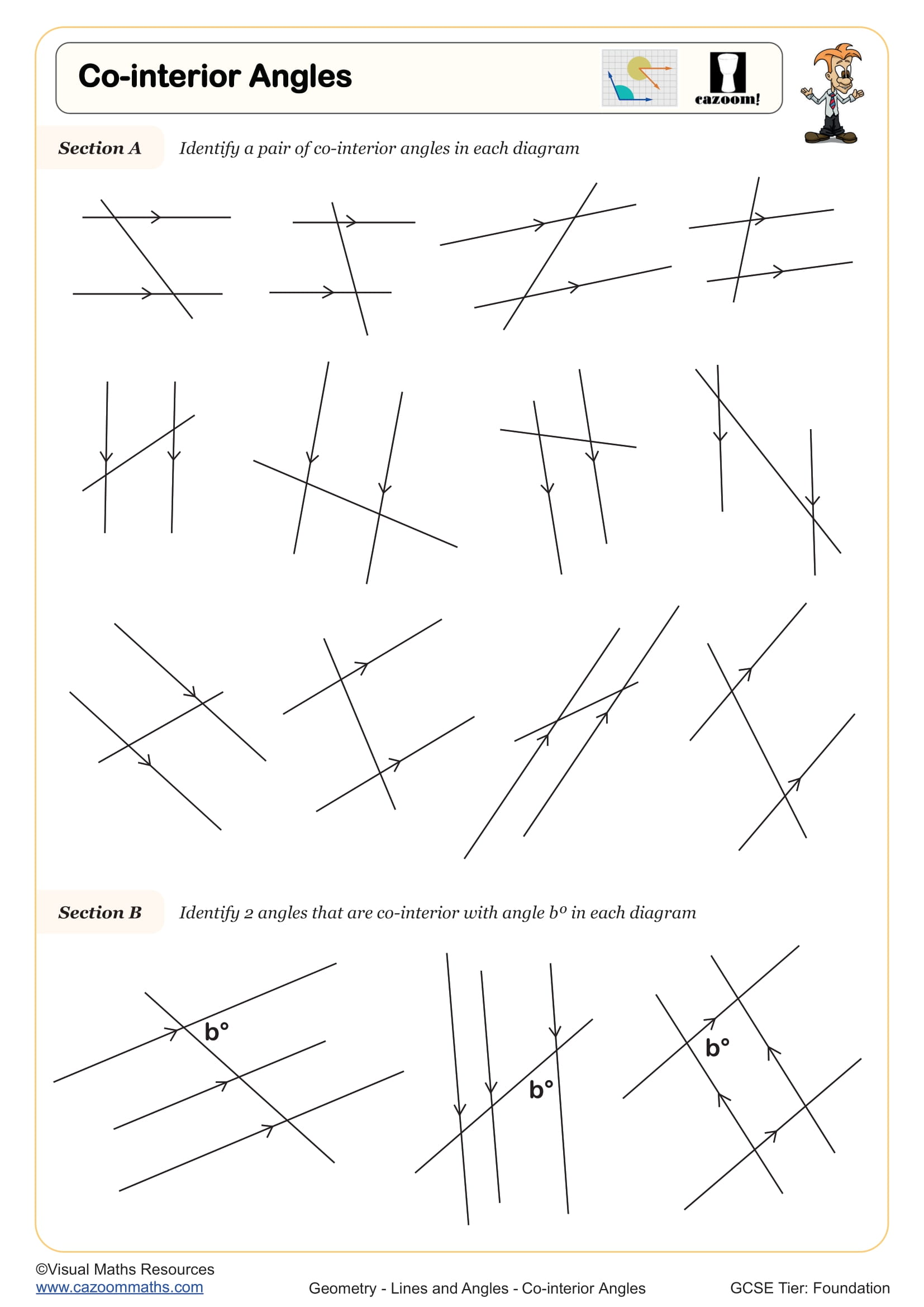
Corresponding Angles
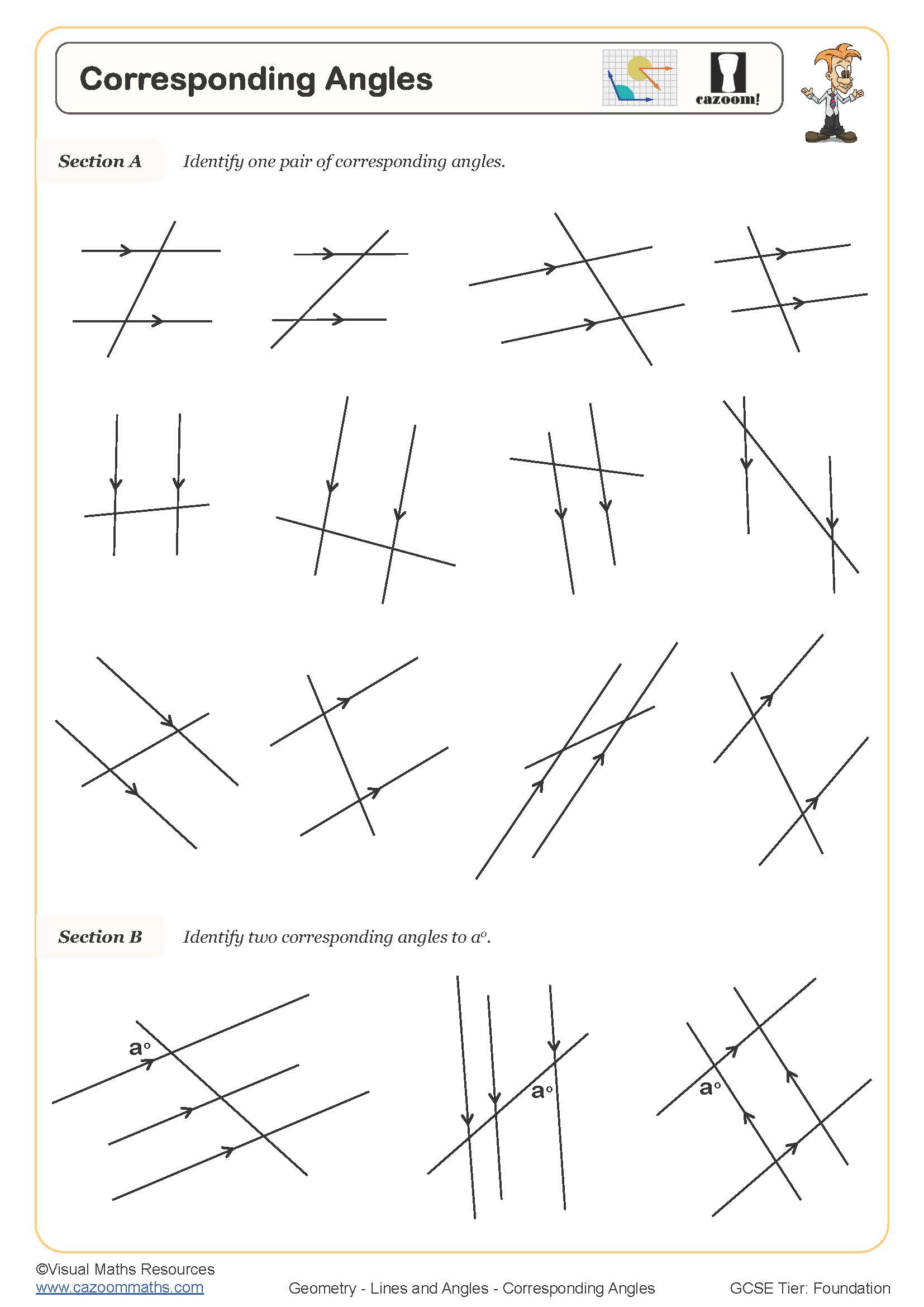
Forming and Solving Equations Involving Angles (B)
-Worksheet.jpg?w=3840)
9 Benefits of Adding Our Ready-to-Print Year 9 Geometry Worksheets to Your Revision Plan
Moving from Year 8 geometry to Year 9's advanced angle work requires careful scaffolding that bridges concrete calculations with abstract mathematical proof. Students who work with angle worksheets on a regular basis build their spatial reasoning skills, which help them succeed in GCSE geometric proof questions that most students struggle with. The sequence of complex problems enables students to identify patterns between various angle types, which develops their analytical skills for advanced mathematical work. The method provides students with a systematic way to handle complex problems that require multiple angle rule applications in one question.
Specific learning benefits include:
• Learn the angle rules that apply to parallel lines.
• Develops geometric proof techniques
• Strengthens algebraic angle problems
• Builds circle theorem understanding
• The tool provides better accuracy for complex mathematical operations which require multiple steps.
• Prepares for GCSE geometry topics.
• Develops robust problem-solving abilities
Worksheet Topics at a Glance: Lines, Angles, Circle, and More
The worksheets follow a concrete-pictorial-abstract progression that supports deep mathematical understanding, with detailed worked solutions demonstrating both calculation methods and reasoning processes. This collection systematically covers essential angle relationships, from foundational triangle properties through to sophisticated circle theorems that form the backbone of GCSE geometry. Each resource category targets specific skill development whilst maintaining clear connections to the broader geometric framework students need to master.
The worksheets in this collection include:
• Foundation Angle Facts — practising triangle properties and basic angle calculations on straight lines
• Parallel Lines Introduction — identifying and applying alternate and corresponding angle relationships
• Parallel Lines Application — multi-step problems combining different angle rules with increasing complexity
• Parallel Lines with Support — scaffolded versions providing reasoning prompts and guided problem-solving steps
• Algebraic Angles — integrating algebra with geometry through angle equations and expressions
• Circle Theorems Foundation — introducing key theorems with clear diagrams and structured practice
• Circle Theorems Advanced — complex problems requiring multiple theorems and sophisticated reasoning
Trusted by Educators: Why Parents Value Cazoom Maths KS3 Lines and Angles Worksheets Too
Teachers value these worksheets because they address the real challenge of differentiating geometry instruction across mixed-ability classes without creating entirely separate lesson plans. The program provides standard and scaffolded versions, which enable students who struggle to get help while advanced learners work on extension problems that lead to common learning targets. Teachers can easily identify the specific practice needs of students because the topics follow a logical sequence, making intervention planning both efficient and successful. The answer sheets with full working demonstrate both correct answers and the expected mathematical reasoning at GCSE level, which enables students to study exemplar responses independently.
\Everyday Maths: Where Year 9 Students Use Lines and Angles in Real Life
Understanding angles transforms how students perceive the designed world around them, from architecture to technology. These geometric principles appear constantly in practical situations that young people encounter daily.
• Navigation and map reading for outdoor activities and travel planning
• Camera angles serve as a fundamental visual storytelling tool that photography and film production rely on for their artistic expression.
• Sports techniques encompass both the angles employed in snooker and the passing routes utilised in football.
• Engineering and construction projects requiring precise angle measurements
• Computer game design and 3D modelling applications
Art and design work involving perspective and geometric patterns
• DIY projects and furniture assembly using angle brackets and joints
• Science experiments require an understanding of how light behaves during surface reflection and material transmission.